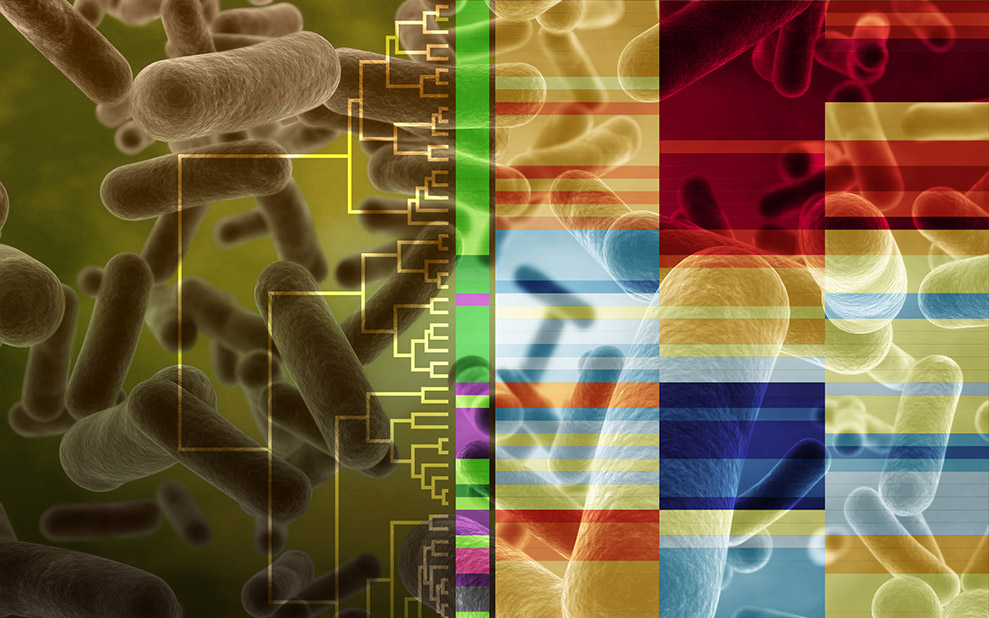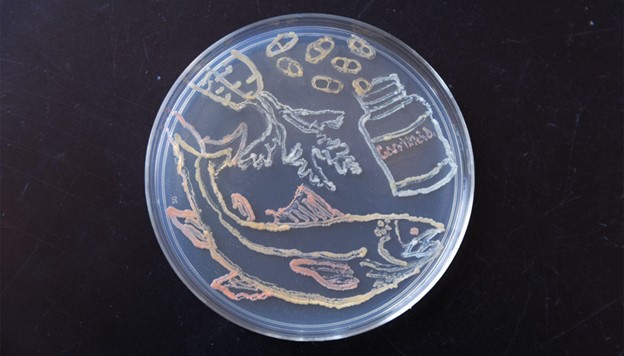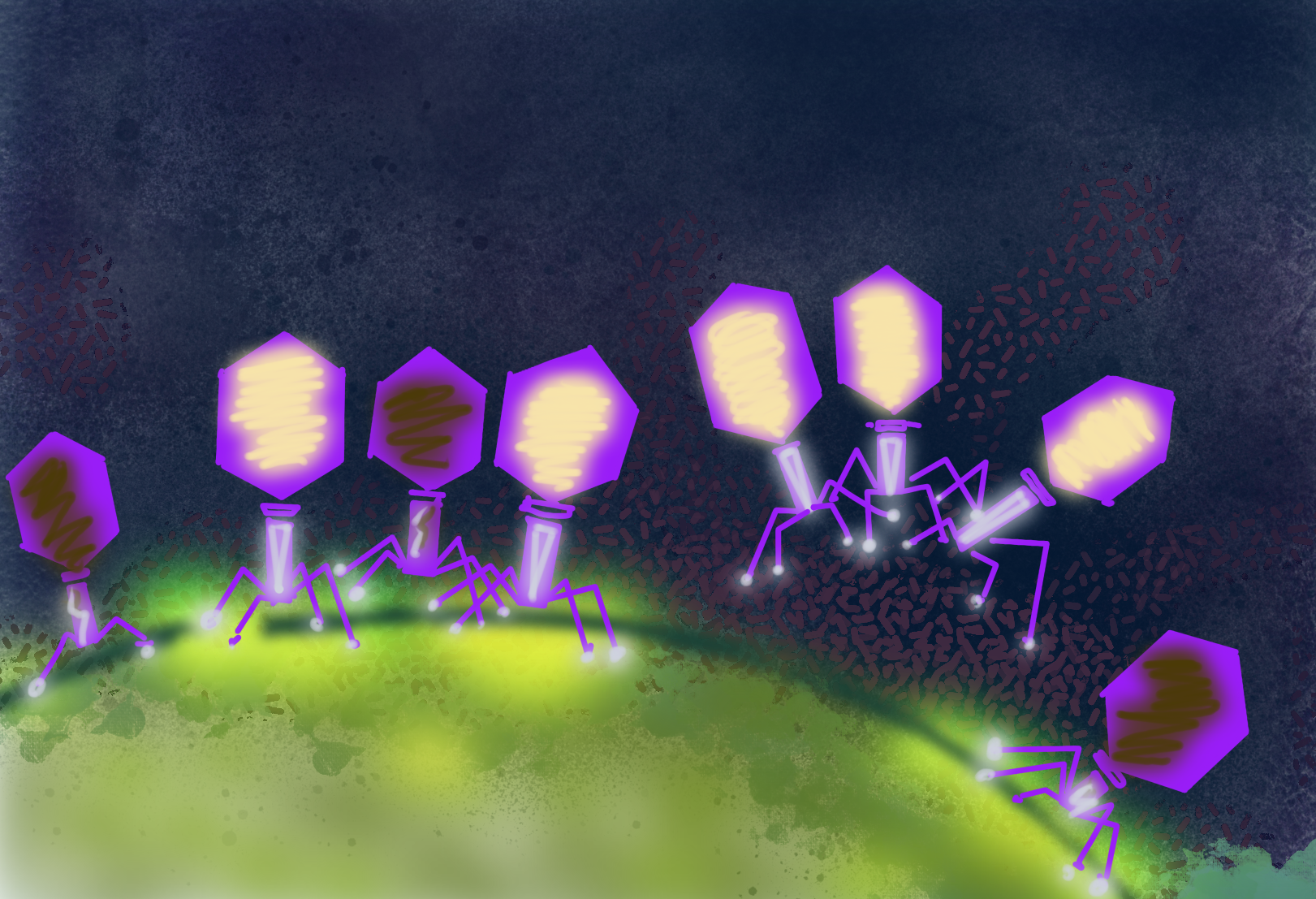How a Bacterium Uses Multiple Enzymes to Degrade Plant Biomass
Analyses reveal how a microbe breaks down lignin, providing a better understanding useful to making biofuels.

The Science
Biofuels from plant biomass are a highly promising source of energy. To ease production, researchers are trying to find microbes that readily degrade recalcitrant lignin in plant biomass. Researchers conducted a comprehensive genomic and metabolomic analysis of a known lignin-degrading bacterium. They identified three types of enzymes that break up lignin. The results provide insight into how this degradation is accomplished.
The Impact
The initial step in manufacturing biofuels from plant matter is breaking it into more manageable “building blocks.” Understanding how nature achieves this is critical. The findings reveal some of the basic tools used by a specific microbe to break down lignin. This work offers insight into how industrial processes might achieve degradation during biofuel production. Also, it shows how side processes such as hydrogen production might be harnessed.
Summary
Lignocellulosic biomass represents nearly 90 percent of the dry weight of total plant biomass material and is composed of cellulose and lignin. Lignin lends rigidity and rot-resistance to cell walls in wood and bark. It is a complex, cross-linked phenolic structure that makes lignocellulosic-derived biofuels a promising source of alternative energy, provided the recalcitrant material can be degraded and toxic by-products can be managed. Scientists are interested in microbial species that grow in environments where carbon is mainly available as lignin. Understanding how these microbes degrade plant matter could aid in finding new ways to remove lignin and convert it to fuel precursors. One candidate species that can use lignin for growth in the absence of oxygen is Enterobacter lignolyticus SCF1, a bacterium isolated from the soil in a tropical rain forest in Puerto Rico. A team of researchers from the University of Massachusetts, Amherst; Santa Maria University in Valparaiso, Chile; and EMSL, the Environmental Molecular Sciences Laboratory conducted whole gene-expression analysis of E. lignolyticus SCF1 using next-generation sequencing for transcriptomic analysis. The experiments were conducted on cells grown in the presence of lignin, with samples taken at three different times during growth. Cultures with lignin achieved twice the cell biomass as cultures grown without lignin and degraded 60 percent of the available lignin. A complement of enzymes consistent with disruption of the chemical structures present in lignin were up-regulated in lignin-amended conditions. Additionally, the association of hydrogen production with lignin degradation suggests a possible value add to lignin degradation in the future.
Contact
Program Manager
Paul Bayer
Department of Energy, Office of Science, Biological and Environmental Research, SC-23.1
(301) 903-5324
Principal Investigator
Kristin DeAngelis
University of Massachusetts Amherst
deangelis@microbio.umass.edu
Funding
This work was supported by the Joint BioEnergy Institute supported by the Department of Energy’s (DOE’s) Office of Science, Office of Biological and Environmental Research, including support of the Environmental Molecular Sciences Laboratory, a DOE Office of Science user facility, and the University of Massachusetts Amherst.
Publications
R. Orellana, G. Chaput, L.M. Markillie, H. Mitchell, M. Gaffrey, G. Orr, and K.M. DeAngelis, “Multi-time series RNA-Seq analysis of Enterobacter lignolyticus SCF1 during growth in lignin-amended medium.” PLoS One (2017). [DOI: 10.1371/journal.pone.0186440]
Related Links
EMSL science highlight: Bacteria Use Multiple Enzymes to Degrade Plant Biomass
EMSL website: Sequencing, Next Generation, High Throughput: 5500XL SOLiD
Highlight Categories
Performer: University , DOE Laboratory , SC User Facilities , BER User Facilities , EMSL
Additional: Collaborations , Non-DOE Interagency Collaboration



